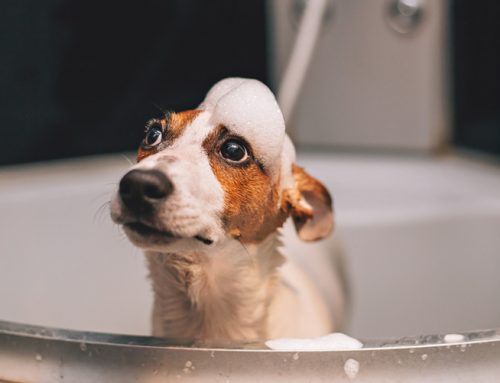Dogs Need to Brush Their Teeth Too!
The American Animal Hospital Association recently released its guidelines for dental care for dogs and cats. Just as for humans, dental care is an important part of your pet’s overall healthcare, and good dental care should begin at home with routine visits to the veterinarian. It’s recommended that pets are examined every 6 months to ensure that they are receiving optimal at-home dental care, but they should be seen at a minimum every 12 months.
While visiting your vet on a regular basis for a dental exam is important, the best dental care can begin at home. Your pet probably won’t have much patience for dental cleanings when you introduce them to this new routine, but with some practice and some praise, you and your pet can be on the road to good dental health.
On an episode of the Hallmark TV series Who Let the Dogs Out, veterinarian Doc Halligan gave some advice for pet owners to begin good dental habits. First, get your pet accustomed to having your fingers in their mouth by handling their mouth for a few minutes each day. If they express reluctance, dip your finger in tuna water or beef bouillon – but don’t encourage them to bite down on your fingers! Once they get used to your hands in their mouth, begin rubbing their teeth with your fingers.
Add flavored toothpaste to your finger and start rubbing their teeth and gums in a circular motion. Pet toothpaste comes in flavors that your pet will enjoy, such as poultry or beef, so it shouldn’t be too difficult to introduce to them. After your pet becomes accustomed to this, start using the pet toothbrush instead of your fingers. Start with short brushing sessions for 15 to 30 seconds in the beginning, and then move to 30 seconds on each side after your pet feels comfortable.
Aim to start brushing their teeth every day and make it a habit to brush their teeth when they are relaxed at home, which could be after a long walk, after eating, or while they are sitting in your lap. Always try to make them feel comfortable during brushing, and never restrain your pet too tightly during the cleaning process. You want them to have a positive experience, so be sure to praise and reward them for good behavior after their teeth get brushed.
If your pet is especially willful and refuses to let you brush their teeth, there are some alternative methods you can try. Instead of a toothbrush, consider purchasing a dental pad or wipe that you can place around your finger. There are also dental sprays and gels if your pet is adamant against having cleaning instruments in their mouth. Certain types of chew toys and bones are formulated to help improve dental health, and some of these might even include tartar-reducing enzymes to prevent further plaque buildup.


